Camel Step Coffee Roasters, Shop
Jeddah, Saudi Arabia Dec.2020

The general character of the store in Jeddah combines authenticity with modernity, focusing on using local natural materials to create an environment that reflects cultural heritage and provides a unique experience for visitors. The coral limestone used in the construction adds a coastal and natural touch to the space, enhancing the sense of warmth and connection to the surrounding environment.

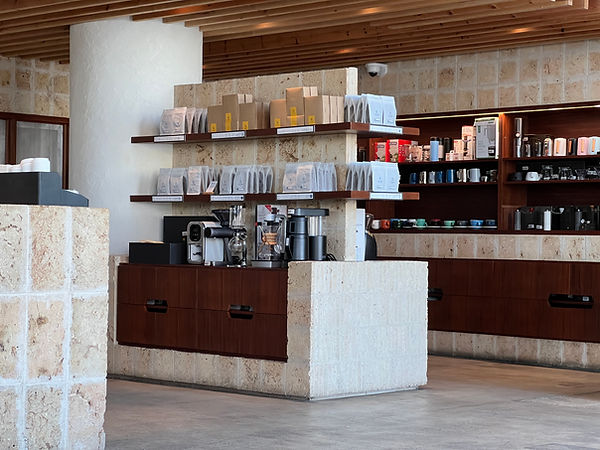






The stone used in the Jeddah project is coral limestone, extracted from coastal areas. This type of stone is primarily composed of calcium carbonate (CaCO3) and is formed through the deposition of coral and coralline algae skeletons over long periods.
Coral limestone is a geologically complex material containing skeletal remains of marine organisms such as coral reefs and red coralline algae. Coral reefs are formed by small organisms that secrete calcium carbonate to build their skeletons. After these organisms die, their skeletal remains accumulate and form the solid deposits known as coral limestone.
This type of stone is known for its natural beauty and strength, adding a unique touch to architectural designs with its distinctive details and natural patterns reflecting the geological history of coastal areas.

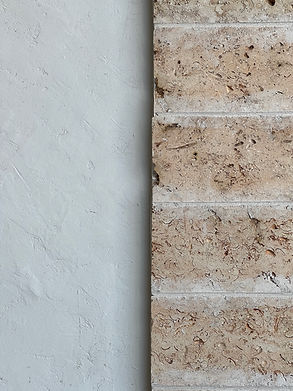
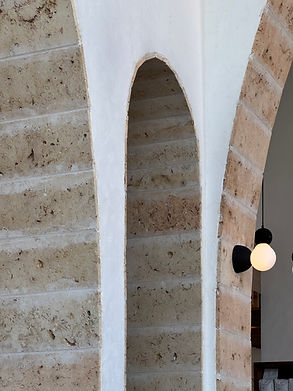
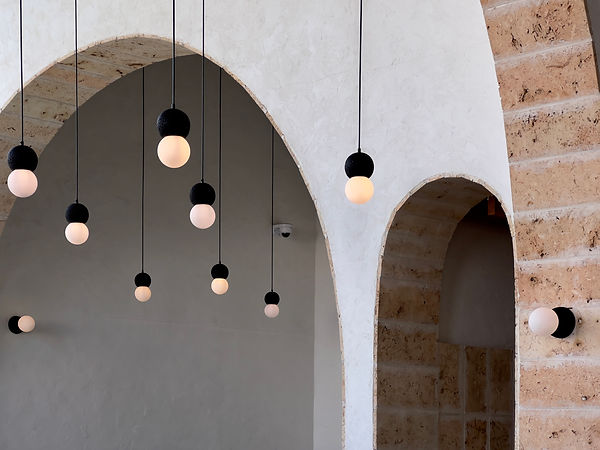
Walls and Arches: The use of coral limestone extracted from coastal areas highlights the beauty of natural patterns and unique details, adding a historical and authentic touch to the store.

Lighting: The lighting is distributed harmoniously using modern and simple fixtures, enhancing the beauty of the space and highlighting architectural design details.
Plants: Adding indoor plants like cacti creates a natural and refreshing atmosphere, enhancing the aesthetic design and adding a touch of vitality.
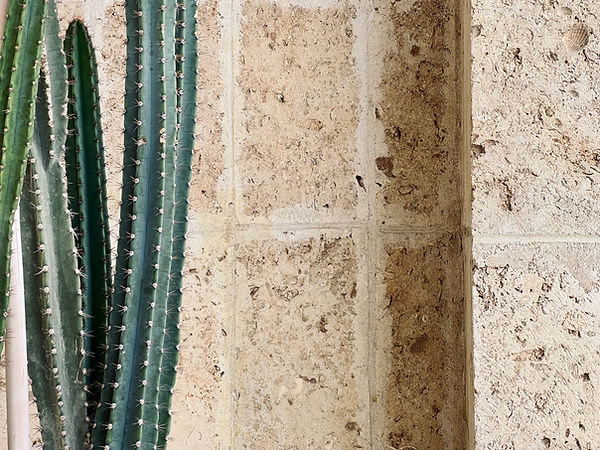
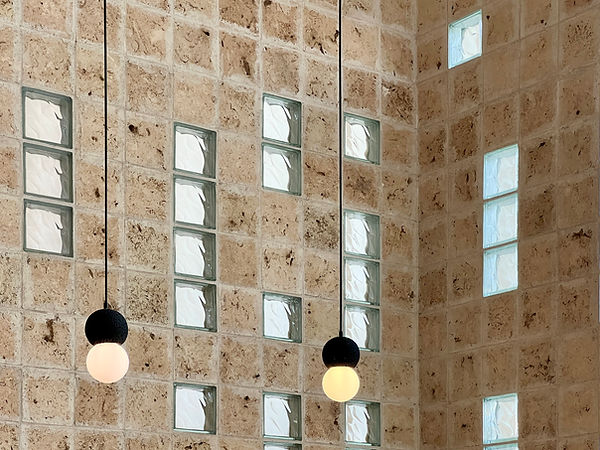
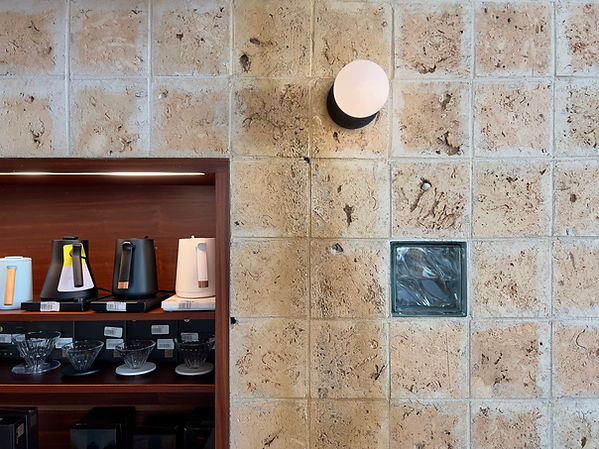

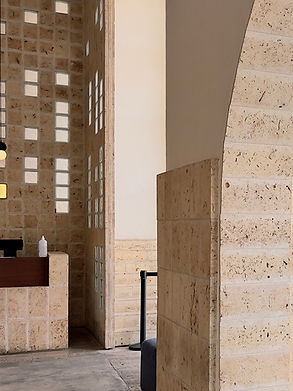
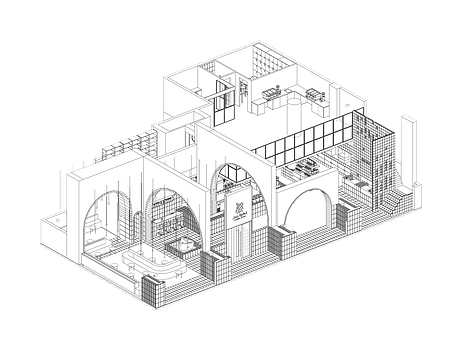
Information:
Client: Camel Step Co.
Location: Jeddah, Saudi Arabia
Area: 440 m²
Year: 2020
Photography by: Mansor Alsofi
Atmosphere:
The store aims to create an environment that combines authenticity and modernity, focusing on providing a comfortable and welcoming experience for visitors. The interior design aims to reflect the unique identity and spirit of the place, maintaining traditional elements and using local materials in innovative and attractive ways.
Design Highlights:
1. Walls and Arches: The use of coral limestone extracted from coastal areas highlights the beauty of natural patterns and unique details, adding a historical and authentic touch to the store.
2. Lighting: The lighting is distributed harmoniously using modern and simple fixtures, enhancing the beauty of the space and highlighting architectural design details.
3. Furniture: The selected furniture is comfortable and modern, with attention to fine details and the use of high-quality materials to provide a comfortable and attractive experience for visitors.
4. Plants: Adding indoor plants like cacti creates a natural and refreshing atmosphere, enhancing the aesthetic design and adding a touch of vitality.
Traditional Architectural Style in Hejaz and Its Links to the Store Design:
The traditional architectural style in Hejaz is characterized by several distinctive features, representing a blend of local and global influences due to the region being a hub for pilgrims from various cultures over the centuries.
Key Elements of Hejazi Architecture:
1. Rectilinear Form: This shape facilitates construction and increases building density, reflecting the nature of densely populated historic Hejazi cities.
2. Multistory Buildings: The lower floors were used to receive guests and pilgrims, while the upper floors were reserved for permanent residents, maximizing space utilization.
3. Mashrabiya: Wooden projecting windows with lattice screens provide ventilation, privacy, and block direct sunlight, making them a significant architectural feature in Hejaz.
4. Use of Roofs as Living Spaces: Families would sleep on the roofs during summer to enjoy the cooler night air, a logical response to the hot climate.
5. Ornamentation: Includes geometric patterns, plant motifs, and Arabic calligraphy, often seen on walls, mashrabiyas, doors, and windows.
6. Doors: Doors played a crucial role in expressing the owner’s identity and social status, featuring prominent decorations and vibrant colors.
7. Use of Local Materials: Such as coral stone, clay, and palm wood, giving the buildings distinctive colors and textures that blend with the local environment.
The store in Jeddah uses coral limestone, reflecting a long tradition of utilizing local materials for construction. The design of the arches and walls inspired by traditional Hejazi architecture enhances the sense of authenticity. The use of modern lighting and indoor plants adds a touch of modernity without compromising the essence of the architectural heritage.
Thus, the project reflects a harmonious blend of heritage and modernity, making it a splendid example of integrating traditional elements with modern designs to create a unique and attractive environment.